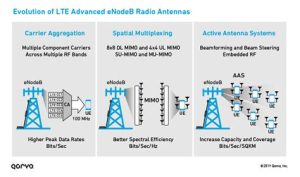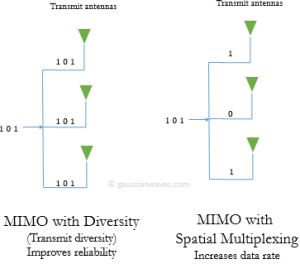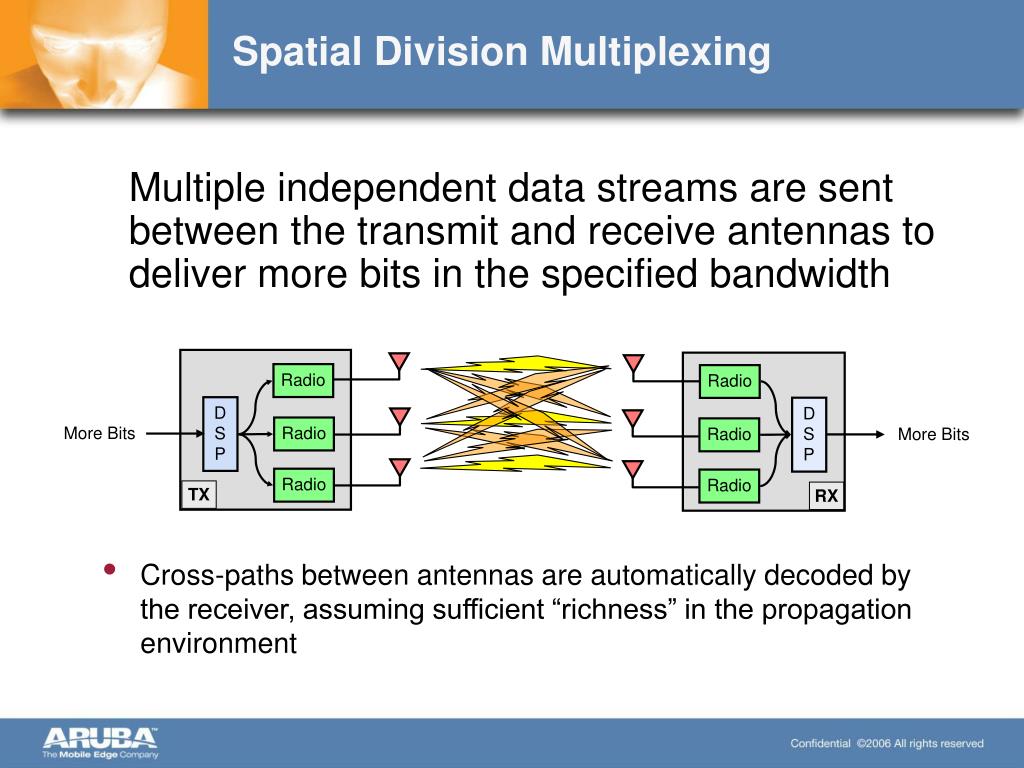Perplexing as it may seem, multiplexing is a technique that allows multiple signals to share a single communication channel. But hold on tight because spatial multiplexing takes this concept to the next level by transmitting multiple data streams simultaneously using multiple antennas at both the transmitter and receiver ends. Burstiness abounds in wireless communication systems thanks to this technique’s ability to provide higher data rates.

Enter MIMO (Multiple Input Multiple Output) technology, one of the most commonly used techniques for spatial multiplexing in wireless communication systems. With an arsenal of multiple antennas at both ends of the transmission link, capacity increases and signal quality improves with every passing moment. How does MIMO spatial multiplexing work its magic? By creating independent channels between each transmit-receive antenna pair that’ll leave you scratching your head wondering how it all works.
But wait, there’s more! Wireless spatial diversity jumps into the fray with its use of multiple antennas at either end of a wireless link to mitigate fading caused by multi-path propagation – taking perplexity up another notch altogether. Techniques like space-time coding, beamforming, and frequency hopping can be combined alongside spatial multiplexing for better signal quality and reliability – making optimal performance achievable even in challenging environments where interference or noise may be present.
MIMO Technology: Multiple Antennas and Spatial Multiplexing
Contents
- 1 MIMO Technology: Multiple Antennas and Spatial Multiplexing
- 2 Techniques for Wireless Spatial Diversity
- 3 Advancements in MIMO Spatial Multiplexing
- 4 Transmit and Receive Antennas in Wireless Communication
- 5 Multiplexing Techniques for Higher Data Rates
- 6 Diversity Techniques for Better Signal Quality
- 7 Spatial Multiplexing and Diversity: Combining Techniques for Optimal Performance
The enigmatic and dynamic world of wireless communication is constantly evolving, with Multiple Input Multiple Output (MIMO) technology being one of its most fascinating innovations. This system utilizes multiple antennas to transmit and receive data streams, but what sets MIMO apart from other technologies is spatial multiplexing – a feature that enables the transmission of numerous data streams simultaneously over the same frequency band.

Intriguingly, each antenna in a MIMO system transmits or receives a separate spatial stream; therefore, the number of antennas determines how many spatial streams can be supported within the system. Spatial multiplexing allows these individual streams to be merged at the receiver end, which amplifies overall throughput.
Moreover, multiplexing techniques are vital components in MIMO systems as they enhance information transmission over singular channels. Spatial multiplexing is an example of such techniques that deploys various antennae for transmitting different parts of messages concurrently on diverse channels within one frequency band. The result? More information transmitted through fewer channels with less interference than traditional methods could ever allow!
Techniques for Wireless Spatial Diversity
The world of wireless communication is a perplexing and bursty one, with new techniques emerging all the time to combat fading signals and improve quality. One such technique is spatial diversity, which involves using multiple antennas at both transmitter and receiver ends to ensure that interference or fades don’t bring down the whole system.
But it’s not just about redundancy – multiple antennas can also be used for spatial multiplexing, where data can be transmitted simultaneously through different transmit antennas. This results in higher bandwidths and faster data rates compared to single-antenna systems. Spatial multiplexing takes advantage of MIMO technology’s ability to separate signals sent from different input multiple output (IMO) channels.
And if you thought that was impressive, wait until you hear about massive MIMO. This cutting-edge technology utilizes a large number of receive and transmit antennas, providing significant multiplexing gain by transmitting several independent streams simultaneously on each antenna element. But why stop there? Optical SDM can take things even further by utilizing additional dimensions like wavelength or polarization.
It’s hard not to feel awestruck by the advancements in wireless spatial diversity over the years. With multiple antennas at both ends working together, signal quality has improved dramatically while allowing for increased bandwidths through techniques like massive MIMO and optical SDM technologies. It’s clear that these innovations will continue to shape future wireless communication systems in ways we can only imagine right now.
Advancements in MIMO Spatial Multiplexing
MIMO spatial multiplexing has made major strides in recent years, particularly with the implementation of multiple antennas for transmit diversity. This concept is based on the utilization of various antenna systems to send signals over a communication system, which effectively addresses issues related to wavelength and propagation. With an increased number of transmit antennas, throughput and channel capacity can be drastically improved.
Another remarkable breakthrough within MIMO spatial multiplexing is the integration of frequency-division multiplexing (FDM). FDM empowers simultaneous transmission of several signals over one single channel by breaking it down into smaller sub-channels. The result? An impressive boost in data rates that doesn’t require additional bandwidth or spectrum resources.
Diversity and spatial multiplexing are two dynamic techniques often intertwined when it comes to MIMO systems. Spatial multiplexing allows for enhanced data rates by transmitting multiple streams simultaneously through diverse receiver antennas, while diversity helps improve signal quality via interference reduction caused by fading or other factors. By skillfully merging these strategies together as one cohesive unit, optimal performance from a wireless communication system can be achieved!
Transmit and Receive Antennas in Wireless Communication
The role of transmit and receive antennas in wireless communication systems is nothing short of critical. The advent of MIMO technology has opened up new possibilities for utilizing multiple antennas to improve data rates and signal quality. It’s truly astonishing how space division multiplexing can enable the transmission of multiple streams over a single channel, resulting in significantly higher data rates and better signal-to-noise ratios.
However, one cannot ignore the challenges posed by multipath propagation in wireless communication. Signals traveling through different paths before reaching their destination can cause havoc, leading to interference and degradation of the received signal. But all hope is not lost as transmitting signals over independent channels using multiple antennas provides much-needed diversity that helps mitigate this problem.
Apart from its use in wireless communication systems, transmit and receive antennas have also found application in other fields such as optical fiber networks where Wavelength-division Multiplexing (WDM) technique allows simultaneous transmission of multiple signals over a single optical fiber by assigning different wavelengths for each signal. Signal processing techniques are used at the receiver end to demultiplex these signals back into their original form.
It’s fascinating how transmit and receive antennas play an essential role in improving various types of communication systems across industries without any doubt or question asked about their effectiveness or reliability making them indispensable parts for modern-day communications infrastructure development around us!
Multiplexing Techniques for Higher Data Rates
The intricacies of wireless communication systems have necessitated the use of multiplexing techniques to achieve faster data transfer rates. Spatial multiplexing, a technique that utilizes multiple antennas at both ends of a communication link, has proven to be particularly effective in this regard.
By transmitting several signals simultaneously using different spreading codes or frequency channels, spatial multiplexing increases system capacity without expanding bandwidth. The number of receive antennas also plays a crucial role in achieving higher data rates by enabling better detection and decoding of received signals.
Notably, cellular networks have been quick to adopt these techniques and implement MIMO technology with Alamouti coding schemes that utilize two transmit and two receive (2×2) antennas. Transmitting and receiving on multiple channels has allowed for significant capacity expansion while maintaining high-quality connections between users.
Overall, the utilization of such advanced techniques enables wireless communication systems to optimize their resources efficiently while providing better signal quality and faster data transfer rates. With advancements in technology enabling more complex algorithms for transmitting and receiving multiple signals through a single antenna array, we can expect even greater gains in efficiency over time – truly an exciting prospect!
Diversity Techniques for Better Signal Quality
The intricacies of wireless communication systems can be perplexing, but diversity techniques offer a burst of hope. These techniques involve using multiple antennas to transmit and receive data over a single channel in order to improve signal quality. One such technique is spatial diversity, which utilizes multiple antennas at both the transmitter and receiver to combat fading caused by multipath propagation.
But wait! The complexity doesn’t end there. Enter orthogonal frequency-division multiplexing (OFDM), a dizzying modulation technique that allows for higher data rates by dividing channels into subcarriers. Each subcarrier carries a portion of transmitted data, increasing bandwidth efficiency with more bits per second sent. OFDM also has an added benefit – it’s less susceptible to fading than traditional single-carrier modulation schemes.
As if all these concepts weren’t already causing your head to spin, let’s throw another one into the mix: spatial multiplexing. This form of multiple antenna technology enables uncorrelated streams of data to be sent simultaneously over individual channels through different coefficients on each antenna element so that received signals are orthogonal or nearly so. With multiple independent streams traveling through these individual channels via spatial multiplexing, overall throughput and signal quality in wireless communication systems can skyrocket without requiring additional spectrum or power resources – now that’s something worth bursting about!
Spatial Multiplexing and Diversity: Combining Techniques for Optimal Performance
The perplexing yet bursting world of wireless communication relies heavily on spatial multiplexing and diversity to enhance signal quality and increase data rates. The technique of spatial multiplexing involves the simultaneous transmission of multiple streams over a single frequency channel using several antennas at both ends. Conversely, spatial diversity uses various antennas to transmit or receive the same signal through different paths, reducing fading and improving overall signal strength.
When combined, these techniques result in optimal performance for wireless networks that make efficient use of network resources. For example, base stations can send multiple signals over various time slots on the same frequency channel by utilizing spatial multiplexing which are then demultiplexed into their original form using multiple antenna elements at the receiving end.
Not only limited to wireless communication, but spatial multiplexing and diversity have also been integrated into fiber optics and data centers where they aid in retrieving noisy signals back to their original form. By transmitting copies of a single signal through various paths or frequencies (e.g., wavelength division), errors caused by noise or interference can be significantly reduced.
Overall, combining these techniques provides an effective solution for optimizing network performance while ensuring reliable data transmission across diverse applications such as 5G networks and IoT devices. As technology continues its rapid evolution journey, it is expected that more innovative ways will emerge for effectively applying these techniques in numerous domains.


